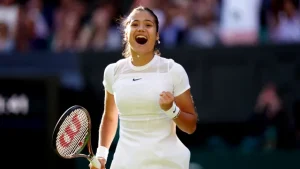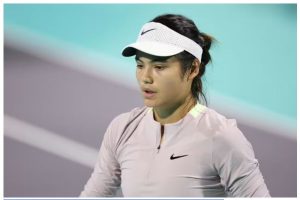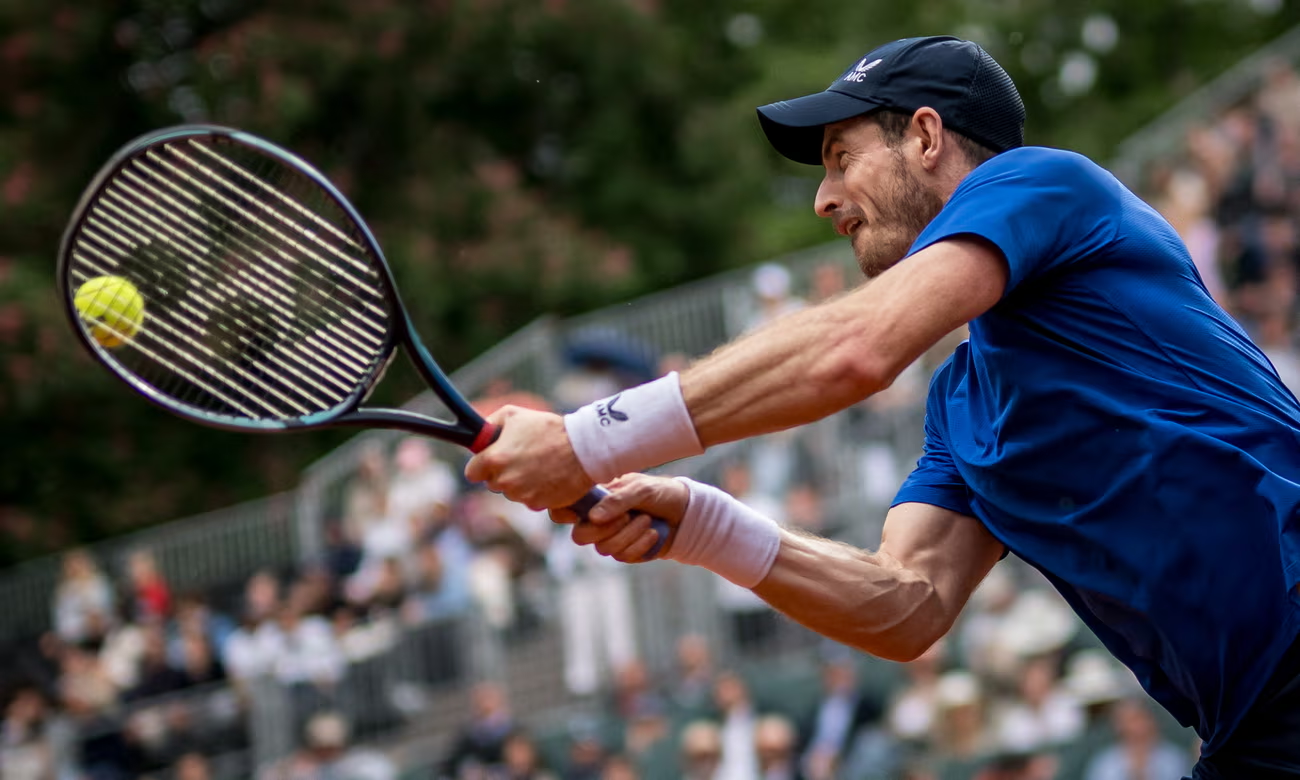
Andy Murray has only ever reached the French Open final once, in 2016 (Image: GETTY)
After 20 years with Head, Andy Murray is now wielding a Yonex, a move that gives a rare glimpse into how professionals hunt for any advantage
Even as Andy Murray reckoned with a devastating setback in what will probably be the final months of his career, he was still thinking with total clarity. In the aftermath of a serious ankle injury at the Miami Open in March that left him facing a significant layoff, Murray sensed an opportunity.
Before returning home from Florida, the 37-year-old limped to a sports shop and browsed its stash of rackets. He left with a ridiculous haul; 10 frames, scales, a swingweight machine and a roll of lead tape to help modify their weight.
During his six weeks out of competition, Murray worked through the rackets, tinkering and testing which specifications were best. He eventually contacted Yonex to work with their racket professionals.
When he arrived in Bordeaux for his first day of training before last week’s ATP Challenger event, Murray caused a stir on planet tennis by going to work with a Yonex Ezone 100. “It was something to do when I was injured,” he said.
“I tried lots of different rackets. I tested them with Hawk-Eye when I was able to and I loved the Yonex. I’m really happy to be using the racket and I think it’s going to help me for as long as I play.”
Over time, top players become closely associated with the manufacturers they endorse. Murray had used Head rackets throughout his career and essentially was the face of the Head Radical range. To some, seeing Murray wielding a Yonex is akin to Harry Kane randomly showing up at Stamford Bridge as a Chelsea player.
As other players learned of Murray’s switch, their shocked reactions were comical. Stefanos Tsitsipas was so taken aback he required a moment to process the news. Taylor Fritz needed to hear it twice. Tommy Paul, who endorses Yonex, said: “Wow, that’s crazy,” before staring silently into space. “I mean, that’s awesome.”
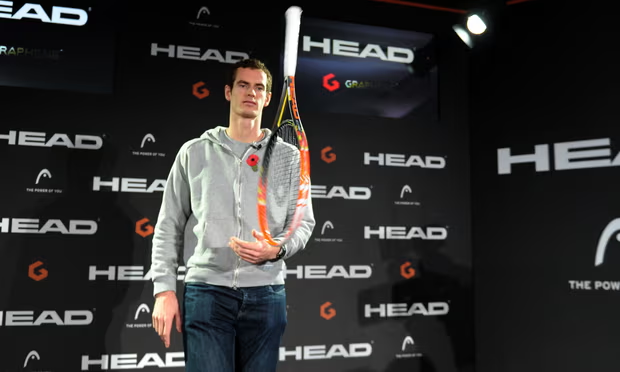
This has been a long time coming. In the second half of 2021, Murray started looking to change to a different Head racket and tried a few frames before returning to his trusty old weapon. Then and now, Murray has used electronic line-calling systems, which offer players data on pace, spin and much more to choose his racket. It is reflective of Murray’s attention to detail that his decisions have been based on data rather than feeling.
This time, he was determined to see how the newer technology would suit his game: “I’ve been playing with the same racket for 20 years and in that time things change,” he said. “The game has changed as well. I used the same string as well for all of that time.”
Switching to any other brand would have been a shock, but this is also notable because of how starkly different the two rackets are. Murray’s new modified Yonex Ezone 100 is much livelier than his Head PT57A with a larger and different shaped head. He may hope to inject more power into his game at a time when his movement and defensive capabilities have waned.
A racket can come to feel like the extension of a player’s arm and as such they become sensitive to even the most minute changes to it. Cameron Norrie has used the same type since he was 12 years old. Some players periodically conduct blind tests with numerous rackets: “I’ll line up, put all the rackets the same, and I’ll pick which one I like,” says Coco Gauff. “I did that two years ago. I ended up picking the racket I was already using. I didn’t know [it was my one]. That shows I’m happy where I’m at.”
Fritz plays with an extremely light stick. In his late teens, he decided to add a very small amount of weight to it, five grams: “Then I had the worst year I’ve ever had,” he says, laughing. “I hated it. I went back.
“Who knows what [the problem] could be. You change rackets, one shot feels better, one shot feels probably worse. I’m happy how everything feels for me, so I’ve never really been one to tinker around with it.”
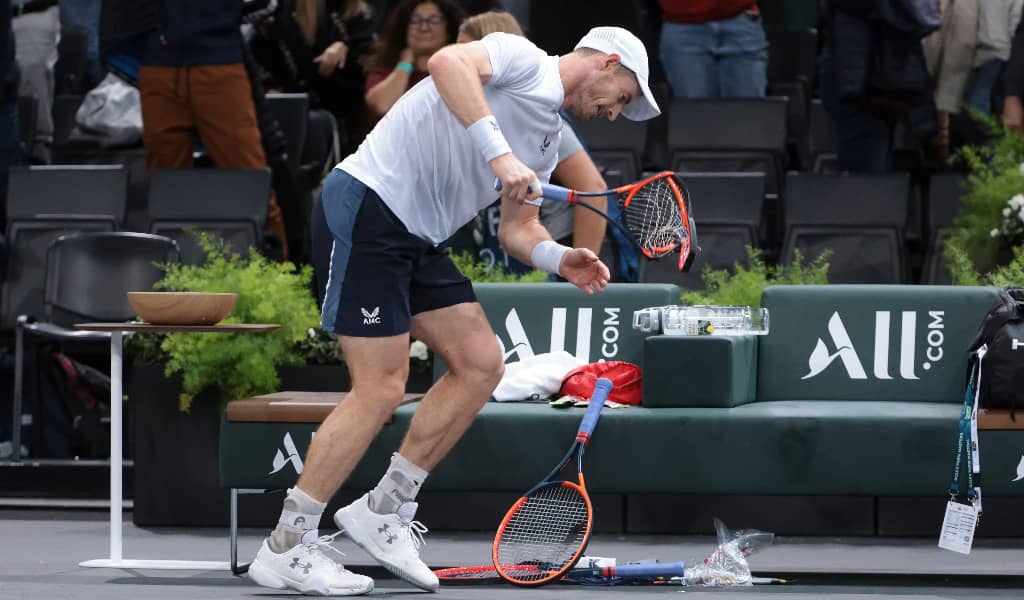
At the end of 2022, a breakthrough season when he climbed into the top 30 for the first time, Paul, now ranked No 14, changed from Wilson to a Yonex VCORE 98. In January, he reached a grand slam semi-final for the first time at the Australian Open. “It was all the racket, it wasn’t me,” he says, laughing.
Many do not adjust with such ease. It often takes time to grow accustomed to a new frame’s nuances and to hit the ball freely under intense pressure. There can even be a period of discomfort.
“Breaking up that pattern and doing certain things differently, it ruins your rhythm,” Tsitsipas says. “It ruins your flow. It gets you thinking. Once you start thinking a lot, it’s an issue because you can’t concentrate on what’s happening in front of you.”
That can be an acceptable trade-off for a player when they have long-term growth in mind, but Murray’s pursuit of grand slam titles probably made him more resistant to significant change. Now, not only has he changed in the middle of the season, he has also done so in what he has said will probably be the final few months of his career. It may also be an indication he is hoping to find reasons to play on.
While many professionals say they would consider a change, few would do so mid-season. Iga Swiatek had thought about testing new rackets after the 2023 season, but even that risk was too great. Tsitsipas says he has made minimal changes to his specifications over the years: “It has served me relatively well.
“I might be a bit more open-minded to it towards the end of the year. We’ll see. These are the moments you try to go try things and experiment with a few changes, but definitely not during the season. This is something that I wouldn’t be too open-minded to try.”
After 20 years of sticking with the same frame, Murray was finally brave enough to twist. It is an extremely bold and unusual move, but it is perhaps another glimpse of the drive this transcendent talent still possesses, one still so passionate about his craft and so determined to improve. The question is whether he will.
